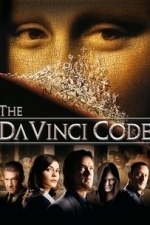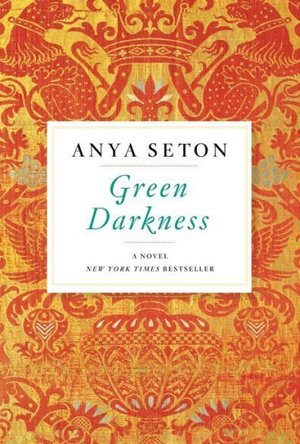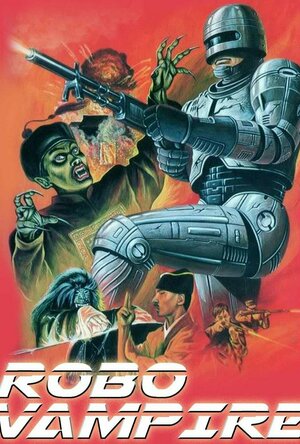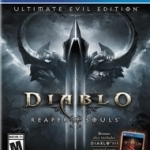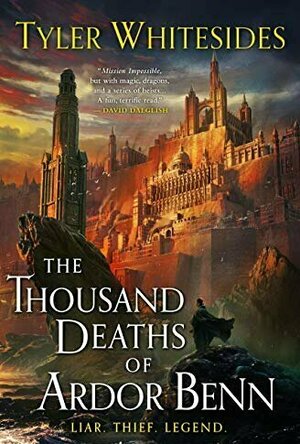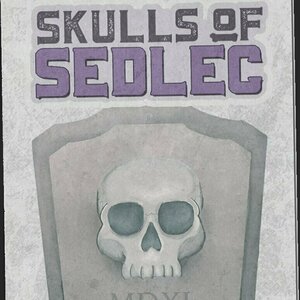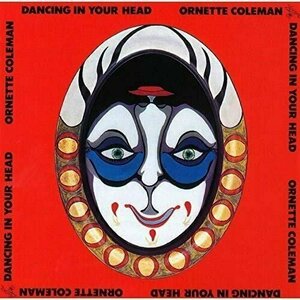Search
Search results
Gareth von Kallenbach (971 KP) rated The Da Vinci Code (2006) in Movies
Aug 14, 2019
No film since “The Last Temptation of Christ” has invoked as much controversy as The Da Vinci Code based on the book of the same name by Dan Brown. Prior to the film even being screened for the press, cries ran out to ban the film and its message that some find blasphemous. Fortunately calmer heads have prevailed and the film by Director Ron Howard has arrived in a wash of media frenzy not seen since Mel Gibson’s The Passion of the Christ.
If you are seeing a pattern forming, you would be correct as it seems that few topics can raise ire and wrath more than the topic of religion, especially if the film proposes a viewpoint that differs from the traditional beliefs that are given by the church, bible, and history.
In the film, a monk appears to murder an elderly man who with his last ounces of strength, manages to leave a cryptic riddle on his body. The bizarre nature of the crime prompts French police inspector Fache (Jean Reno) to travel to the Louvre to investigate the crime. A clue at the crime scene causes the police to summer Robert Langdon (Tom Hanks) from a lecture hall where he is signing his latest book on symbols. Since the deceased was supposed to meet Langdon earlier in the day Langdon has fallen under suspicion for the crime.
As he attempts to decipher the message at the crime scene, Langdon encounters a police cryptologists named Sophie (Audrey Tautou), who informs Robert that he is in danger and soon the duo are fleeing from the police after deciphering some hidden clues at the crime scene.
Before either Robert or Audrey knows what is happening, they are being accused of multiple murders and on the run. As the clues begin to mount, the mystery takes an even stranger turn by the discovery of an artifact that when unlocked, should contain a map.
Seeking refuge and help, the duo arrive at the estate of Sir Leigh Teabing (Sir Ian Mc Kellen), who proceeds to tell Robert and Sophie that the clues they have uncovered are part of a cover-up that segments of the church will stop at nothing to keep secret. The nature of this secret is such that should it become public knowledge, then they very foundations of history, faith, and the church could be shaken to their core.
As the mystery becomes clearer, the group are attacked by a Monk named Silas (Paul Bettany), who has been doing the violent work of someone know as The Teacher in an effort to discover the location of artifacts and those attempting to uncover the mystery.
What follows is a frantic race that travels from Paris to London in an effort to get to the bottom of the mystery and unravel the true nature of the mystery and the secret that people are willing to kill for in order to protect.
While some may find the mystery, the players, and their motivations confusing, the film does grab hold and moves along at a solid pace. Ron Howard once again shows his skill by directing a film that is different from his other works, yet rich in its visuals and complexity. The scenic locales of the film enhance the mystery (For those who have not read the book), as they attempt to decipher the clues along with the characters.
The work from the cast was solid as Hanks gives a very good if restrained performance in his portrayal. Mc Kellen is a very nice blend of elegance and old world charm that lifts up every scene in which he is in.
While there are those who will lambaste the film for the message it provides, I chose to look at it as a film that does what movies should, entertain and make you think. The film is not saying its assertions are hard and cold facts, what it is doing is providing a vehicle for debate.
In college I was told that through debate comes knowledge and growth for a society. This was common in ancient Greek and Roman society where issues of the day would be debated in open forums. It seems that we as a society have become too insistent to take things at face value and have forgotten that the very nature of the human experience is to question, grow, and seek our own answers. As such the film is a great example of how Hollywood at times gets it right and provides solid entertainment that will stimulate as well as entertain.
If you are seeing a pattern forming, you would be correct as it seems that few topics can raise ire and wrath more than the topic of religion, especially if the film proposes a viewpoint that differs from the traditional beliefs that are given by the church, bible, and history.
In the film, a monk appears to murder an elderly man who with his last ounces of strength, manages to leave a cryptic riddle on his body. The bizarre nature of the crime prompts French police inspector Fache (Jean Reno) to travel to the Louvre to investigate the crime. A clue at the crime scene causes the police to summer Robert Langdon (Tom Hanks) from a lecture hall where he is signing his latest book on symbols. Since the deceased was supposed to meet Langdon earlier in the day Langdon has fallen under suspicion for the crime.
As he attempts to decipher the message at the crime scene, Langdon encounters a police cryptologists named Sophie (Audrey Tautou), who informs Robert that he is in danger and soon the duo are fleeing from the police after deciphering some hidden clues at the crime scene.
Before either Robert or Audrey knows what is happening, they are being accused of multiple murders and on the run. As the clues begin to mount, the mystery takes an even stranger turn by the discovery of an artifact that when unlocked, should contain a map.
Seeking refuge and help, the duo arrive at the estate of Sir Leigh Teabing (Sir Ian Mc Kellen), who proceeds to tell Robert and Sophie that the clues they have uncovered are part of a cover-up that segments of the church will stop at nothing to keep secret. The nature of this secret is such that should it become public knowledge, then they very foundations of history, faith, and the church could be shaken to their core.
As the mystery becomes clearer, the group are attacked by a Monk named Silas (Paul Bettany), who has been doing the violent work of someone know as The Teacher in an effort to discover the location of artifacts and those attempting to uncover the mystery.
What follows is a frantic race that travels from Paris to London in an effort to get to the bottom of the mystery and unravel the true nature of the mystery and the secret that people are willing to kill for in order to protect.
While some may find the mystery, the players, and their motivations confusing, the film does grab hold and moves along at a solid pace. Ron Howard once again shows his skill by directing a film that is different from his other works, yet rich in its visuals and complexity. The scenic locales of the film enhance the mystery (For those who have not read the book), as they attempt to decipher the clues along with the characters.
The work from the cast was solid as Hanks gives a very good if restrained performance in his portrayal. Mc Kellen is a very nice blend of elegance and old world charm that lifts up every scene in which he is in.
While there are those who will lambaste the film for the message it provides, I chose to look at it as a film that does what movies should, entertain and make you think. The film is not saying its assertions are hard and cold facts, what it is doing is providing a vehicle for debate.
In college I was told that through debate comes knowledge and growth for a society. This was common in ancient Greek and Roman society where issues of the day would be debated in open forums. It seems that we as a society have become too insistent to take things at face value and have forgotten that the very nature of the human experience is to question, grow, and seek our own answers. As such the film is a great example of how Hollywood at times gets it right and provides solid entertainment that will stimulate as well as entertain.
Acanthea Grimscythe (300 KP) rated Green Darkness in Books
May 16, 2018
Having picked <i>Green Darkness</i> up from the local library bookstore sale for only a quarter, I truly had no idea what I was getting myself into. Historical fiction, in any form, is not a genre that I've spent much time with, and coupling that with paranormal romance? Well, we can safely say that I was in for a ride.
<i>Green Darkness</i> shares the harrowing tale of forbidden love in mid-1500s England between an unfortunate peasant girl and a Benedictine monk, betwixt the reigns of King Edward VI, Queen Mary I, and Queen Elizabeth - a time when Catholicism and Protestantism (depending on the ruler) were met with persecution. It doesn't begin in that era, however; rather, the story starts in the 1960s, when Celia and her newly wedded husband, Richard Marsdon, arrive at his family's ancestral estate in Sussex. A baffling illness befalls the Marsdons, leaving the unorthodox physician, Doctor Akananda, to unravel the mysterious past that haunts the pair from hundreds of years before.
The twisting tale that unravels of that love affair is only a small part of what I enjoyed about this book, as romance is not typically my cup of tea. What truly enticed me was [a:Anya Seton|18930|Anya Seton|https://d.gr-assets.com/authors/1224813438p2/18930.jpg]'s faithfulness not only to history, but to location, legend, and use of historical figures. Cowdray House and Ightham Mote are real places, and an unfounded rumor regarding the Mote suggests that a female skeleton was found within its walls - which Seton used as a basis for her story. Through Seton, I discovered an unknown love for Tudor England, and undoubtedly I will read more books set in that time period.
Despite my praise for the book, I was unable to give it a five star rating because of its conclusion: it was as if Seton ran out of fuel. The idea of reincarnation takes a more ridiculous turn when Doctor Akananda hints at more pasts that conveniently interlock the same people. As if that were not enough of an affront, the resolution itself fell flat. With the Marsdon family tragedy conveniently wrapped up, Celia and Stephen seem aloof and their interaction felt a bit too forced. It is for this reason that I gave the book four stars.
<i>Green Darkness</i> shares the harrowing tale of forbidden love in mid-1500s England between an unfortunate peasant girl and a Benedictine monk, betwixt the reigns of King Edward VI, Queen Mary I, and Queen Elizabeth - a time when Catholicism and Protestantism (depending on the ruler) were met with persecution. It doesn't begin in that era, however; rather, the story starts in the 1960s, when Celia and her newly wedded husband, Richard Marsdon, arrive at his family's ancestral estate in Sussex. A baffling illness befalls the Marsdons, leaving the unorthodox physician, Doctor Akananda, to unravel the mysterious past that haunts the pair from hundreds of years before.
The twisting tale that unravels of that love affair is only a small part of what I enjoyed about this book, as romance is not typically my cup of tea. What truly enticed me was [a:Anya Seton|18930|Anya Seton|https://d.gr-assets.com/authors/1224813438p2/18930.jpg]'s faithfulness not only to history, but to location, legend, and use of historical figures. Cowdray House and Ightham Mote are real places, and an unfounded rumor regarding the Mote suggests that a female skeleton was found within its walls - which Seton used as a basis for her story. Through Seton, I discovered an unknown love for Tudor England, and undoubtedly I will read more books set in that time period.
Despite my praise for the book, I was unable to give it a five star rating because of its conclusion: it was as if Seton ran out of fuel. The idea of reincarnation takes a more ridiculous turn when Doctor Akananda hints at more pasts that conveniently interlock the same people. As if that were not enough of an affront, the resolution itself fell flat. With the Marsdon family tragedy conveniently wrapped up, Celia and Stephen seem aloof and their interaction felt a bit too forced. It is for this reason that I gave the book four stars.
Debbiereadsbook (1110 KP) rated Single (Single Dads #1) in Books
Jun 28, 2019
so bloody sweet, but GOOD!
Independent reviewer for Archaeolibrarian, I was gifted my copy of this book.
This book, this just shy of 200 pages?? So bloody sweet, I broke a tooth!
I mean it's so bloody good, so cute, warm and fuzzies too!
Ash is left, quite literally, holding the baby, and the idiot banging on his door at 3am is gonna get it if he wakes Mia up! Sean comes to rescue his friend, who just moved in next door to Ash, and is smitten, immediately, and totally with Ash, but equally, with Mia. Once Sean knows Ash is single, he wages an all out war to make him see that just because he has a baby, he doesn't have to be a monk.
Like I said, so bloody good!
Both Ash and Sean have a say, in the first person. Both voices are clearly headed, and happen as the chapter changes. Both men's voices are well defined and they tell their story well. I loved the marked differences between them too.
Ash is trying, bless him, to be the best dad he can, and is a little overwhelmed by that new dad feeling, especially now he bought Mia home, and he is alone. He thinks he won't have a life til she leaves home, and holds steadfast to that, till Sean makes him see that he doesn't need to give up on life. Ash's sister will help, his mother is a bit on the dodgy side. Their relationship is rocky at the best of times, but she tries to make amends here, she really does.
Eric and Leo are Sean best friends and house mates. Sean is an Emergency Room doctor; Eric, a fireman and Leo is a cop. They three guys are great together, and once Sean admits Ash is HIS, they look out for Ash and Mia.
There are some characters who hint at their stories, Eric and Leo included, and I can't wait to meet Brady properly: he has some tale to tell, I'm sure!
This is the first full length book I've read of Scott's that was just written by her. I've read the Owattonna U Hockey series she wrote with VL Locey. I want to read more. I really enjoyed this!
4 sickly sweet but oh so GOOD stars!
**same worded review will appear elsewhere**
This book, this just shy of 200 pages?? So bloody sweet, I broke a tooth!
I mean it's so bloody good, so cute, warm and fuzzies too!
Ash is left, quite literally, holding the baby, and the idiot banging on his door at 3am is gonna get it if he wakes Mia up! Sean comes to rescue his friend, who just moved in next door to Ash, and is smitten, immediately, and totally with Ash, but equally, with Mia. Once Sean knows Ash is single, he wages an all out war to make him see that just because he has a baby, he doesn't have to be a monk.
Like I said, so bloody good!
Both Ash and Sean have a say, in the first person. Both voices are clearly headed, and happen as the chapter changes. Both men's voices are well defined and they tell their story well. I loved the marked differences between them too.
Ash is trying, bless him, to be the best dad he can, and is a little overwhelmed by that new dad feeling, especially now he bought Mia home, and he is alone. He thinks he won't have a life til she leaves home, and holds steadfast to that, till Sean makes him see that he doesn't need to give up on life. Ash's sister will help, his mother is a bit on the dodgy side. Their relationship is rocky at the best of times, but she tries to make amends here, she really does.
Eric and Leo are Sean best friends and house mates. Sean is an Emergency Room doctor; Eric, a fireman and Leo is a cop. They three guys are great together, and once Sean admits Ash is HIS, they look out for Ash and Mia.
There are some characters who hint at their stories, Eric and Leo included, and I can't wait to meet Brady properly: he has some tale to tell, I'm sure!
This is the first full length book I've read of Scott's that was just written by her. I've read the Owattonna U Hockey series she wrote with VL Locey. I want to read more. I really enjoyed this!
4 sickly sweet but oh so GOOD stars!
**same worded review will appear elsewhere**
Jesters_folly (230 KP) rated Robo Vampire (1988) in Movies
Aug 11, 2020
Contains spoilers, click to show
Drug baron Mr Young is fed up with Narcotics agent Tom Wilde interfering with his plans so he hires a Taoist monk to train a vampire to kill him. After his death Tom is rebuilt as an Android Robot and sent on a mission to help rescue a captured officer.
The cover/poster art would have us believe that this is a Robocop vs vampire movie and I suppose that it is in the looses possible sense. First off this is low budget Hong Kong Jiangshi (rotting corpse) movie with added cyborg (Sorry Android Robot) so the vampires are of the hopping type not the western 'gentleman'.
I've given this film a 6 on the basis that it's so bad it's good. Most of the vampires are ok and look like the standard hopping type but the lead vampire seems to be wearing a gorilla mask to make it look rotten. No one bleeds when shot and it's obvious when dummies are used instead of stun doubles . Even taking this into account I would have given Robo Vampire a higher rating but it gets hard to follow. There are two story-lines to follow, the rescue of Sophie, an undercover agent that has been kidnapped and the Tom-robot vs the vampire's and ghost. And this is the first confusing part of the plot. Tom's creators say that he is to be sent on the rescue mission but he is never with the rescue party. Instead he goes off to fight the vampire. So the film switches between the rescue and Tom vs the vampires. Even this wouldn't be a problem except that the story-lines seem to continue even when we're not watching. For example, the rescue party are heading towards the camp with baddies jumping out at them from all directions. The we switch to Robo and when we switch back to the rescue two of the party are swimming in a lake with no sign of any of the others and end up getting captured, then back to Robo, then back the rest of the rescue party who don't even acknowledged that two of their party are missing but aren't surprised when they see them as prisoners. This sort of thing happens a lot, it's almost as if some one just cut out random scenes. Characters also just seem to appear with no introduction and switch sides with no seeming reason.
The cover/poster art would have us believe that this is a Robocop vs vampire movie and I suppose that it is in the looses possible sense. First off this is low budget Hong Kong Jiangshi (rotting corpse) movie with added cyborg (Sorry Android Robot) so the vampires are of the hopping type not the western 'gentleman'.
I've given this film a 6 on the basis that it's so bad it's good. Most of the vampires are ok and look like the standard hopping type but the lead vampire seems to be wearing a gorilla mask to make it look rotten. No one bleeds when shot and it's obvious when dummies are used instead of stun doubles . Even taking this into account I would have given Robo Vampire a higher rating but it gets hard to follow. There are two story-lines to follow, the rescue of Sophie, an undercover agent that has been kidnapped and the Tom-robot vs the vampire's and ghost. And this is the first confusing part of the plot. Tom's creators say that he is to be sent on the rescue mission but he is never with the rescue party. Instead he goes off to fight the vampire. So the film switches between the rescue and Tom vs the vampires. Even this wouldn't be a problem except that the story-lines seem to continue even when we're not watching. For example, the rescue party are heading towards the camp with baddies jumping out at them from all directions. The we switch to Robo and when we switch back to the rescue two of the party are swimming in a lake with no sign of any of the others and end up getting captured, then back to Robo, then back the rest of the rescue party who don't even acknowledged that two of their party are missing but aren't surprised when they see them as prisoners. This sort of thing happens a lot, it's almost as if some one just cut out random scenes. Characters also just seem to appear with no introduction and switch sides with no seeming reason.
Rachel King (13 KP) rated Fantasy (Includes: Leopard People, #0.5; Midnight, #0.5) in Books
Feb 11, 2019
The fantasy theme was heavy with all four of the stories in the book. The first story is The Widow's Auction by Sabrina Jeffries. In this novella, a young widow is convinced that it is in her favor to auction off one night with her in return for a large sum of money that she can use to benefit her work with a all-boys' school. Of course, she secretly just wants to know what it's like to actually enjoy the bedtime act. In the realm of make-believe, this was quite the enjoyable mix of lust and romance with no negative consequences.
The second story is Luisa's Desire by Emma Holly. In this fascinating read, an immortal woman seeks an alternative to her need for blood to survive in a remote lamasery buried in the Himalayan mountains of Tibet. While she assumes that the answer is a particular form of meditation, what she instead gets is an aspiring monk who possesses a much more fleshly solution to her problem. Reincarnation takes on a whole new meaning in this short story, and I found the different take on vampires in fiction to be well-written.
The third story is Mr. Speedy by Elda Minger. In this plot, an ambitious young woman decides to make herself over into a man in order to sneak into and cover a male-only conference entirely about getting a woman to go to bed with the man. Her genius plan takes a left-turn when she discovers she is rooming with the city's most eligible bachelor coming off of a horrid divorce - whom she is overwhelmingly attracted to. The irony of this story is that the bachelor becomes increasingly interested in her before he is even aware she is in disguise. The humor of this story made it quite charming in a sexy sort of way.
The final story is The Awakening by Christine Feehan. The story begins her series, the Leopard People, with the tale of a young veterinarian lured deep into the jungle to track down her inheritance. Heavy lust and desire take over quite early in the story as the reader discovers that her presence there has been manipulated by a man of the leopard people who has already claimed her for his mate. The intensity and over-dramatization in the writing made this story less enjoyable for me than the others. I was also put off by the man's extreme obsession with the woman and his reluctance to tell her what was happening to her right from the beginning.
The second story is Luisa's Desire by Emma Holly. In this fascinating read, an immortal woman seeks an alternative to her need for blood to survive in a remote lamasery buried in the Himalayan mountains of Tibet. While she assumes that the answer is a particular form of meditation, what she instead gets is an aspiring monk who possesses a much more fleshly solution to her problem. Reincarnation takes on a whole new meaning in this short story, and I found the different take on vampires in fiction to be well-written.
The third story is Mr. Speedy by Elda Minger. In this plot, an ambitious young woman decides to make herself over into a man in order to sneak into and cover a male-only conference entirely about getting a woman to go to bed with the man. Her genius plan takes a left-turn when she discovers she is rooming with the city's most eligible bachelor coming off of a horrid divorce - whom she is overwhelmingly attracted to. The irony of this story is that the bachelor becomes increasingly interested in her before he is even aware she is in disguise. The humor of this story made it quite charming in a sexy sort of way.
The final story is The Awakening by Christine Feehan. The story begins her series, the Leopard People, with the tale of a young veterinarian lured deep into the jungle to track down her inheritance. Heavy lust and desire take over quite early in the story as the reader discovers that her presence there has been manipulated by a man of the leopard people who has already claimed her for his mate. The intensity and over-dramatization in the writing made this story less enjoyable for me than the others. I was also put off by the man's extreme obsession with the woman and his reluctance to tell her what was happening to her right from the beginning.
Gareth von Kallenbach (971 KP) rated the PlayStation 4 version of Diablo III Ultimate Evil Edition in Video Games
Jun 19, 2019
When Blizzard brought Diablo 3 to the Playstation 3 and Xbox 360 systems, there was great delight amongst gamers. The ability to play the amazing game on consoles was a dream come true as was the 4 player co-op that was a key feature of the game.
With Reaper of Souls releasing for the PC soon after, many console fans longed to continue their adventure and thankfully with the release of the Diablo III: Ultimate Evil Edition, players can enjoy both Diablo 3 and the Reaper of Souls add on for their consoles, both new and past generation.
Players can play solo or with up to four players as they battle unending legions of undead and supernatural enemies across a vast and highly-detailed world.
Take note that the game is a challenge and Reaper takes great delight with rifts, bounties, and amazing loot, but with it comes a deadly and vast array of enemies that will not stop until you are dead.
As a long time PC player of the series, it was great to see that the loading screens were gone and how fast and smooth the game ran on the Playstation 4, without compromising any of the amazing graphics and locales that the game was famous for.
All the player classes were in place and it was nice to see the Crusader, Wizard, Monk, Demon Hunter, Barbarian and Witch Doctor in action on a console. The game offers an apprentice mode to veteran players can include newbies in their adventures and players can transfer their characters via a USB to another system so they can play with friends.
Players who own Diablo 3 can also move their characters over to the new edition with ease.
The great social aspects of the Xbox One and Playstation 4 allows players to stream their gameplay and also enjoy four players playing in one game at the same time, a truly great achievement for PC users who at times had to wait for friends to purchase a copy of the game to play.
It is hard to find anything to fault in the game, some may complain about buying Diablo 3 and needing to purchase this set to get the Reaper content instead of getting the option to upgrade, but when you look at all of the bonus material and enhanced features, this is simply a must own game for any console owner.
http://sknr.net/2014/08/20/diablo-iii-ultimate-evil-edition/
With Reaper of Souls releasing for the PC soon after, many console fans longed to continue their adventure and thankfully with the release of the Diablo III: Ultimate Evil Edition, players can enjoy both Diablo 3 and the Reaper of Souls add on for their consoles, both new and past generation.
Players can play solo or with up to four players as they battle unending legions of undead and supernatural enemies across a vast and highly-detailed world.
Take note that the game is a challenge and Reaper takes great delight with rifts, bounties, and amazing loot, but with it comes a deadly and vast array of enemies that will not stop until you are dead.
As a long time PC player of the series, it was great to see that the loading screens were gone and how fast and smooth the game ran on the Playstation 4, without compromising any of the amazing graphics and locales that the game was famous for.
All the player classes were in place and it was nice to see the Crusader, Wizard, Monk, Demon Hunter, Barbarian and Witch Doctor in action on a console. The game offers an apprentice mode to veteran players can include newbies in their adventures and players can transfer their characters via a USB to another system so they can play with friends.
Players who own Diablo 3 can also move their characters over to the new edition with ease.
The great social aspects of the Xbox One and Playstation 4 allows players to stream their gameplay and also enjoy four players playing in one game at the same time, a truly great achievement for PC users who at times had to wait for friends to purchase a copy of the game to play.
It is hard to find anything to fault in the game, some may complain about buying Diablo 3 and needing to purchase this set to get the Reaper content instead of getting the option to upgrade, but when you look at all of the bonus material and enhanced features, this is simply a must own game for any console owner.
http://sknr.net/2014/08/20/diablo-iii-ultimate-evil-edition/
Ross (3282 KP) rated The Thousand Deaths of Ardor Benn in Books
Feb 2, 2021
Thrilling epic fantasy heist
This was a very original take on the fantasy genre (for me at least). The main character, Ardor Benn, is a roguish 'ruse artist', who runs small time cons on everyone from bar patrons (betting he can't hit a shot after numerous drinks) to gangsters. He is approached by a religious, monk-type, man who wants to hire him to run a con on the king of the Greater Chain of islands.
The world Whitesides has built is really wonderful, not totally dissimilar to that in Mistborn. However, here materials aren't ingested and 'burned' by people to get powers, they ignite specifics types of grit. This grit has been processed from materials originally eaten and pooped out and burned by dragons. Different materials before being eaten will give different results when ignited, causing a cloud of dust that bends reality - creating light or explosions, stopping all sounds or light or gravity, making impenetrable bubbles or healing. And the most valuable of all is the Visitant Grit, which will summon an all-powerful paladin to implement the ambitions of the worthy holder. This latter grit is produced by igniting the pooped out remnants of a male dragon's bones. Sadly, all male dragons have died out, meaning these saviours are no longer possible. And that's where Ardor's new job comes in...
The story is a non-stop thriller as the job they plan is so ambitious that it takes on several phases, all of which are massive in themselves. There were a few times during the early parts where I felt the story dragged a little (chapters covering one character learning how to mime an operatic aria), but these weren't too damaging to my motivation. There are a number of times when things don't go to plan, and a re-think is needed. These are also well written pieces, as the characters solve these in creative ways. There were no real deus ex machina moments where they escaped despite all odds. There is one very surprising twist/revelation in the final third which had me nervous that all my enjoyment was about to be swallowed up, pooped out and burned, but that turned out not to be the case. This weird pivot was very well handled and worked well within the story.
The action scenes are well narrated, allowing so much better visualisation than a lot of books I've read recently, and the characters are all fairly well realised and develop nicely together and on their own.
An excellent, thrilling fun book, and wonderfully part 1 of a trilogy.
The world Whitesides has built is really wonderful, not totally dissimilar to that in Mistborn. However, here materials aren't ingested and 'burned' by people to get powers, they ignite specifics types of grit. This grit has been processed from materials originally eaten and pooped out and burned by dragons. Different materials before being eaten will give different results when ignited, causing a cloud of dust that bends reality - creating light or explosions, stopping all sounds or light or gravity, making impenetrable bubbles or healing. And the most valuable of all is the Visitant Grit, which will summon an all-powerful paladin to implement the ambitions of the worthy holder. This latter grit is produced by igniting the pooped out remnants of a male dragon's bones. Sadly, all male dragons have died out, meaning these saviours are no longer possible. And that's where Ardor's new job comes in...
The story is a non-stop thriller as the job they plan is so ambitious that it takes on several phases, all of which are massive in themselves. There were a few times during the early parts where I felt the story dragged a little (chapters covering one character learning how to mime an operatic aria), but these weren't too damaging to my motivation. There are a number of times when things don't go to plan, and a re-think is needed. These are also well written pieces, as the characters solve these in creative ways. There were no real deus ex machina moments where they escaped despite all odds. There is one very surprising twist/revelation in the final third which had me nervous that all my enjoyment was about to be swallowed up, pooped out and burned, but that turned out not to be the case. This weird pivot was very well handled and worked well within the story.
The action scenes are well narrated, allowing so much better visualisation than a lot of books I've read recently, and the characters are all fairly well realised and develop nicely together and on their own.
An excellent, thrilling fun book, and wonderfully part 1 of a trilogy.
Lee Ronaldo recommended Ladies of the Canyon by Joni Mitchell in Music (curated)
Purple Phoenix Games (2266 KP) rated Skulls of Sedlec in Tabletop Games
Feb 27, 2020
When it comes to board gaming, bigger does not always necessarily mean better. And that is something that Button Shy Games has really embraced. With all of their wallet games comprising of only 18 cards, they always manage to pack a lot of game into one small space. I think they’ve got the right idea – engaging gameplay, multitude of themes and mechanics, and easy storage and transport! So how does their newest game hold up to their other successful wallet games? Keep reading to find out!
Let us travel back to the 16th Century AD. You are a monk working in the Sedlec Ossuary, a chapel in the Czech Republic. The coincidental timing of the Black Plague and the Hussite Wars has led to some serious overcrowding in the Sedlec graveyard. Working under a half-blind monk, you and your fellow underlings have been tasked with exhuming graves and artfully arranging the skulls in the crypt. Who can create the most unique and tasteful display of skulls? There’s only one way to find out.
Disclaimer: We were provided a prototype review copy of this game for the purposes of this preview. The final components may vary once the Kickstarter campaign has concluded, so the published game may look differently than the one presented in these pictures. -L
Skulls of Sedlec is a game of card drafting and hand management in which players are trying to amass the most points by the end of the game. Here’s how it works. To set up, shuffle all 18 cards. Create a 2×3 grid of 6 facedown piles consisting of 3 cards each. Pick any pile and flip one card face-up from the top. You are now ready to begin! The game is played over a series of turns in which players will draft and play cards into their personal Stack, an arrangement of cards in a pyramid shape. Each card has 2 skulls on it, and each skull earns a certain number of points based on its placement in your Stack. For example, Criminal skulls are vying for redemption in the afterlife, so they score 2 points if they are adjacent to any Priest skulls. At the end of the game, the player with the highest scoring Stack is the winner!
During the game, on your turn, you will take one of these three possible actions: Dig, Collect, or Stack. When you choose to Dig, you choose 2 facedown piles in the graveyard and flip their top cards face-up. Once you have done that, choose one of the two cards you flipped to take into your hand. If you choose to Collect, you simply choose any face-up card from the graveyard and take it into your hand. There is a hand limit of 2 cards per player, though, so if you already have 2 cards in your hand you may not take the Collect action. If you choose to Stack, you select one card from your hand and add it to your Stack, following the placement rules – Stacks are built from the bottom up. Your first card will be placed into the bottom row of your Stack. Depending on how many players are in the game, your Stack will require a different number of cards in each row. A card may only be played into a higher row if it is directly centered over two cards on the row beneath it. Logical enough! The game ends when each player has completed their Stack. Points are then added, and the highest score wins.
As I mentioned earlier, the size of the game does not always dictate the quality of the game, and Skulls of Sedlec is the perfect example of that. For only consisting of 18 cards, it takes a good deal of strategy to claim victory. There are 5 different types of skulls, and they earn points in different ways depending on their placement. You really have to be thinking in advance as to how you want to play the cards in your hand, and what other skulls you need to pick up to maximize your score. You can also see the Stacks of your opponents, so you know what you’re up against. You need an adaptive strategy for success based on the current cards available in the graveyard, as well as potentially anticipating your opponents’ moves. Be careful, though, because once a card has been played to your Stack, it cannot be moved.
Components. Again, this is just a preview copy of the game, but the card quality is already great. It might be something upgraded during the Kickstarter campaign, but if it’s not, you’re still getting a high quality game. Of course, the trademark wallet is on par with the rest of the wallet series, and it protects the cards well. The artwork of Skulls of Sedlec might not be awe-inspiring, but it is still colorful, thematic, and well-done. I appreciate the simplicity of the cards because it makes it easier to see the card types throughout the game and final scoring. You can clearly tell which skulls are which, so the game does not grind to a halt while trying to figure out what the scoring requirements are for a particular skull. And each skull type has a corresponding symbol, which can help our color-blind friends play the game – instead of relying solely on color, the symbols help differentiate the cards. So big kudos there!
As someone who does a fair amount of solo playing, I would like to mention the solo expansion of Skulls of Sedlec, Monstrance. Again, this is a preview of the solo expansion, so final rules and components may vary from those described here. When playing Skulls of Sedlec as a solo game, you will be creating a Stack like in a multiplayer game, as well as a Feature. The Feature you build will have a shape different to that of your normal Stack, and is determined by the Feature card you select at game setup. You will also select a second Feature card, which will be flipped over to reveal a new condition or effect for the game (for example, Romantics in the Stack do not score). Create a graveyard of 4 facedown piles of cards, evenly spread throughout the piles. You are then ready to play.
Gameplay is similar to that of a multiplayer game, but the solo player does not have a hand of cards. Instead, every card that you select will be immediately played into your Stack or your Feature. Placement rules are the same for the Stack, and cards in your Feature must be supported from below or adjacently. When both your Stack and Feature are complete, the game is over and you tally up your score. The solo expansion offers scoring milestones to compare with your score. See if you can best yourself and become a Legendary Artisan instead of remaining a Humble Monk.
Personally, I am not a huge fan of beat-your-own-score solo expansions. That being said, the gameplay of the Monstrance solo expansion still requires decent strategy and thought to maximize your final score. The addition of Features to solo play add another level of strategy because placement is just as important there as it is in your general Stack. Another neat twist is the addition of effects/conditions in solo play. They affect your strategy and make for a unique game every play.
Overall, I would say that Skulls of Sedlec is one of my favorite ButtonShy Games that I have played. It’s fast to play, simple to teach and learn, yet strategic enough that it keeps you engaged the entire time. Another thing I love about it is that it is only a 2-3 player game. We all know that getting together for game nights can be tricky, so I can see myself bringing Skulls of Sedlec to many game nights in which maybe only a few of us could attend. I’m glad I got the opportunity to preview this game, and I will be following the progress of the campaign for sure. If you’re looking for a small filler that still keeps your brain working, definitely consider backing the Skulls of Sedlec campaign!
Let us travel back to the 16th Century AD. You are a monk working in the Sedlec Ossuary, a chapel in the Czech Republic. The coincidental timing of the Black Plague and the Hussite Wars has led to some serious overcrowding in the Sedlec graveyard. Working under a half-blind monk, you and your fellow underlings have been tasked with exhuming graves and artfully arranging the skulls in the crypt. Who can create the most unique and tasteful display of skulls? There’s only one way to find out.
Disclaimer: We were provided a prototype review copy of this game for the purposes of this preview. The final components may vary once the Kickstarter campaign has concluded, so the published game may look differently than the one presented in these pictures. -L
Skulls of Sedlec is a game of card drafting and hand management in which players are trying to amass the most points by the end of the game. Here’s how it works. To set up, shuffle all 18 cards. Create a 2×3 grid of 6 facedown piles consisting of 3 cards each. Pick any pile and flip one card face-up from the top. You are now ready to begin! The game is played over a series of turns in which players will draft and play cards into their personal Stack, an arrangement of cards in a pyramid shape. Each card has 2 skulls on it, and each skull earns a certain number of points based on its placement in your Stack. For example, Criminal skulls are vying for redemption in the afterlife, so they score 2 points if they are adjacent to any Priest skulls. At the end of the game, the player with the highest scoring Stack is the winner!
During the game, on your turn, you will take one of these three possible actions: Dig, Collect, or Stack. When you choose to Dig, you choose 2 facedown piles in the graveyard and flip their top cards face-up. Once you have done that, choose one of the two cards you flipped to take into your hand. If you choose to Collect, you simply choose any face-up card from the graveyard and take it into your hand. There is a hand limit of 2 cards per player, though, so if you already have 2 cards in your hand you may not take the Collect action. If you choose to Stack, you select one card from your hand and add it to your Stack, following the placement rules – Stacks are built from the bottom up. Your first card will be placed into the bottom row of your Stack. Depending on how many players are in the game, your Stack will require a different number of cards in each row. A card may only be played into a higher row if it is directly centered over two cards on the row beneath it. Logical enough! The game ends when each player has completed their Stack. Points are then added, and the highest score wins.
As I mentioned earlier, the size of the game does not always dictate the quality of the game, and Skulls of Sedlec is the perfect example of that. For only consisting of 18 cards, it takes a good deal of strategy to claim victory. There are 5 different types of skulls, and they earn points in different ways depending on their placement. You really have to be thinking in advance as to how you want to play the cards in your hand, and what other skulls you need to pick up to maximize your score. You can also see the Stacks of your opponents, so you know what you’re up against. You need an adaptive strategy for success based on the current cards available in the graveyard, as well as potentially anticipating your opponents’ moves. Be careful, though, because once a card has been played to your Stack, it cannot be moved.
Components. Again, this is just a preview copy of the game, but the card quality is already great. It might be something upgraded during the Kickstarter campaign, but if it’s not, you’re still getting a high quality game. Of course, the trademark wallet is on par with the rest of the wallet series, and it protects the cards well. The artwork of Skulls of Sedlec might not be awe-inspiring, but it is still colorful, thematic, and well-done. I appreciate the simplicity of the cards because it makes it easier to see the card types throughout the game and final scoring. You can clearly tell which skulls are which, so the game does not grind to a halt while trying to figure out what the scoring requirements are for a particular skull. And each skull type has a corresponding symbol, which can help our color-blind friends play the game – instead of relying solely on color, the symbols help differentiate the cards. So big kudos there!
As someone who does a fair amount of solo playing, I would like to mention the solo expansion of Skulls of Sedlec, Monstrance. Again, this is a preview of the solo expansion, so final rules and components may vary from those described here. When playing Skulls of Sedlec as a solo game, you will be creating a Stack like in a multiplayer game, as well as a Feature. The Feature you build will have a shape different to that of your normal Stack, and is determined by the Feature card you select at game setup. You will also select a second Feature card, which will be flipped over to reveal a new condition or effect for the game (for example, Romantics in the Stack do not score). Create a graveyard of 4 facedown piles of cards, evenly spread throughout the piles. You are then ready to play.
Gameplay is similar to that of a multiplayer game, but the solo player does not have a hand of cards. Instead, every card that you select will be immediately played into your Stack or your Feature. Placement rules are the same for the Stack, and cards in your Feature must be supported from below or adjacently. When both your Stack and Feature are complete, the game is over and you tally up your score. The solo expansion offers scoring milestones to compare with your score. See if you can best yourself and become a Legendary Artisan instead of remaining a Humble Monk.
Personally, I am not a huge fan of beat-your-own-score solo expansions. That being said, the gameplay of the Monstrance solo expansion still requires decent strategy and thought to maximize your final score. The addition of Features to solo play add another level of strategy because placement is just as important there as it is in your general Stack. Another neat twist is the addition of effects/conditions in solo play. They affect your strategy and make for a unique game every play.
Overall, I would say that Skulls of Sedlec is one of my favorite ButtonShy Games that I have played. It’s fast to play, simple to teach and learn, yet strategic enough that it keeps you engaged the entire time. Another thing I love about it is that it is only a 2-3 player game. We all know that getting together for game nights can be tricky, so I can see myself bringing Skulls of Sedlec to many game nights in which maybe only a few of us could attend. I’m glad I got the opportunity to preview this game, and I will be following the progress of the campaign for sure. If you’re looking for a small filler that still keeps your brain working, definitely consider backing the Skulls of Sedlec campaign!
